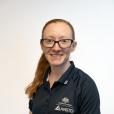
Showing 1081 - 1100 of 1233 results
Research to aid the detection and treatment of dementia
Major study identifies a potential drug target for lowering cholesterol
Study explored how key proteins manage dietary cholesterol absorption and elucidated crucial transport mechanisms that contribute to cholesterol balance in the body.
ISO nuclear safety certification is a first in Australia and the Southern Hemisphere
Synchrotron light to shine brighter over next decade

Laura Maynard is a Radioactive Waste Management Specialist working in ANSTO’s Nuclear Waste Solutions division.

Eleanor is a crystallographer and instrument scientist helping researchers from all over the country use ultra-bright light to answer their scientific questions.
Meteorites from the red desert of Australia support search for life on the red planet Mars
Monash University, University of Queensland and Australian National University researchers have used ANSTO’s Australian Synchrotron in their study of meteorites found on Earth that could be used in future to find evidence of life on the planet Mars.

Applications - Emu
Applications and Publications
ANSTO welcomes the Australian Government's announcement to establish The National Critical Minerals Research and Development Centre
With more than thirty years of expertise and experience in critical minerals and rare earths extraction and processing, ANSTO welcomes the Australian Government’s announcement of a 2022 Critical Minerals Strategy
70 years of scientific excellence has brought significant benefits to Australia
ANSTO is a unique national science organisation that began operating under its predecessor The Australian Atomic Energy Commission (AAEC) 70 years ago.
Progress on hydrogels
Research confirms heating can increase strength of a type of hydrogel.
Fusion energy facility promises clean energy
Applications - Kookaburra
Applications and Publications

Prarthan is a Fun Loving, Innovation Enthusiast, Design Thinker & Leisure Photographer. He has always been engaged towards generating value, connecting to people globally learning new methods, approaches and learning through experimenting.
Inelastic Neutron Scattering School
Outstanding individuals recognised in ANSTO Awards
Outstanding individuals and teams have been recognised for their outstanding work, innovation, excellence in the 2025 ANSTO Awards.

Code of Conduct: Small Angle Scattering Workshop 2022
Collaborative agreement combines extensive scientific infrastructure and expertise
Updating the record
Today The Australian ran a story entitled “Fears for indigenous lands as foreign nuclear waste headed our way”, 18 September 2018. ANSTO was not contacted in relation to the article, but can provide the following information in response which can be attributed to a spokesperson.